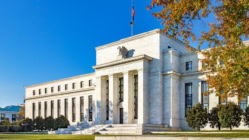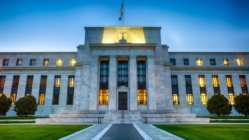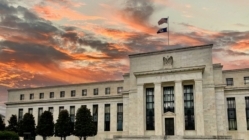
Agents and loan officers dependent upon jumbo mortgages should be worried – very worried!
But, before I explain why, I want to touch on rates today, as they are lower than where they were yesterday at this time – despite HIGHER inflation.
Briefly, inflation numbers are up, as I predicted yesterday, but rates fell today nonetheless. The reasons are twofold: (1) inflation was up, but not quite as much as expected; and (2) jobless claims came in higher than expected, illuminating further “cracks” in the labor market.
BUT – rates have been bouncing down and up all morning. While they remain lower overall right now, as I type, we are getting notices that they are again sliding higher. This is more of the “volatility” I mentioned yesterday as well.
What Happened To Jumbo Loans? (It’s Pretty Interesting)
As much as 70% of JVM’s volume was jumbo in recent years, as our jumbo rates were very low, our team knows guidelines extremely well, and our Bay Area market is one of the country’s primary jumbo markets (along with the NYC area, the DC metro area, and SoCal).
We were not alone with our concentration too, as many other mortgage banks in jumbo markets were similarly jumbo-centric. (As a reminder, “jumbo loans” are loans that exceed the Fannie/Freddie loan limits and can’t be sold to Fannie or Freddie or to investors that buy only conforming loans.)
Anyway, we and most of those other mortgage banks now fund very few jumbo loans, and the reasons are disconcerting at best.
Commercial Banks Plunged Back Into The Market In 2022
In 2022, as rates started to rise and refinances started to dry up, many commercial banks, like First Republic, got far more aggressive with their rate competition in an effort to attract more volume.
At the time, their cost of funds was low (meaning they didn’t have to pay depositors very much or anything at all) and they were not worried about the risk from losing deposits or from being too heavily invested in low-rate bonds (as they did not expect rates to shoot up as much as they did).
In any case, that is the main reason so many mortgage banks lost so much of their jumbo volume; we could not compete with commercial banks like First Republic, who seemed to be giving away loans.
The strategy, as we now know, did not work well for many of those regional banks, as some are out of business (First Republic, Silicon Valley) and many are on the ropes.
As a result, jumbo rates are much higher now than where they were previously compared to conforming (Fannie/Freddie) rates.
Losing Investors
Another reason we mortgage banks faced higher rates compared to the commercial banks is because some of the major investors (mostly commercial banks) that buy jumbo loans from us pulled out of the market.
One example is Wells Fargo. They were our primary buyer of jumbo loans, as they offered the lowest rates by far. But, the CFPB effectively pushed them out of the market, and, sadly, that just increased rates for us and borrowers everywhere (making me wish the CFPB would understand that their “punishments” often hurt consumers more than the institutions they go after).
Jumbo investors left the market because they saw the writing on the wall that I discuss above, because of increased regulatory scrutiny (see Wells Fargo), and because they started to realize they could no longer retain depositors.
Attracting Deposits!
One of the reasons commercial banks make jumbo loans directly or buy jumbo loans from mortgage banks is because they want to use the mortgage as an opportunity to cultivate a relationship with the mortgage borrower in order to attract deposits.
BUT – jumbo lenders learned in 2023 that customers can now pull their deposits very easily and bring them to another institution that is offering higher yields for those same deposits.
As a result, commercial banks will no longer give away the farm in an effort to attract more deposits, and this too has pushed up and will continue to push up jumbo rates.
Stricter Capital Rules
Commercial bank regulators recently proposed stricter capital requirements for banks making or buying jumbo loans, and this too will only make banks more reluctant to be in the jumbo market – pushing jumbo rates up further.
Is There Hope?
- The Big Banks: Some of America’s largest banks are still offering jumbo loans, as those banks are better able to retain depositors due to their perceived “safety.” This keeps their cost of funds lower and gives them the liquidity they need.
- Wholesale Lenders/Private Investors: We are seeing something now that we have not seen since prior to 2008 – wholesale lenders (lenders that solicit loans from brokers and mortgage banks) are offering jumbo loan rates that are close to what the big banks are offering. In addition, there are large institutions, other than commercial banks, that are again buying jumbo loans with more aggressive pricing (lower rates). Prior to 2008, it was not difficult for mortgage loan officers to compete with the big banks on the jumbo front, and we may be returning to that landscape.
BUT – the big takeaway is this: Jumbo rates will continue to edge higher relative to conforming rates, and they could go much higher if rates don’t drop soon.
Jay Voorhees
Founder | JVM Lending
(855) 855-4491 | DRE# 1197176, NMLS# 310167
























